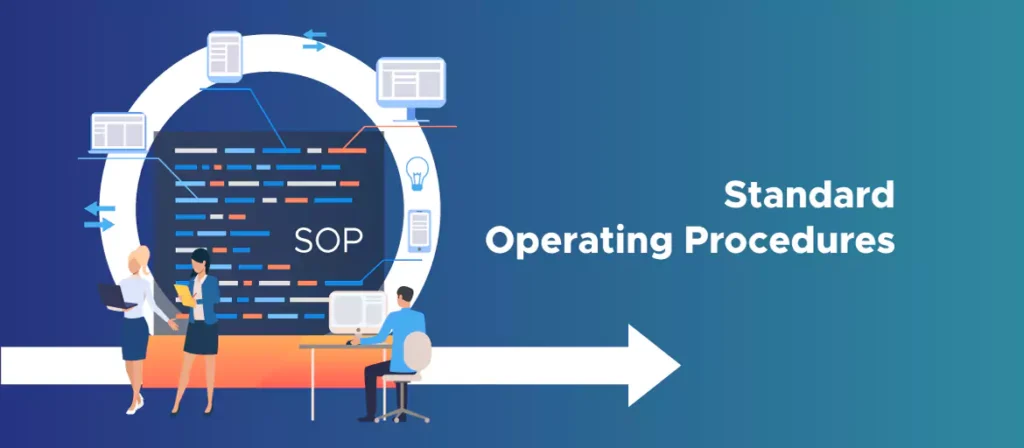The Problem: Operational Inconsistency and Training Gaps
Organizations often face operational inefficiencies, inconsistent performance, and frequent errors. New team members struggle to perform tasks reliably, and inconsistencies become costly—especially in regulated industries or high-precision environments.
The Solution: Adopting a Well-Structured Protocolo Operacional Padrao
Implementing a protocolo operacional padrao (POP) offers immediate relief. This standardized document provides step-by-step guidance for critical tasks, ensuring consistency, improving training, and reducing risk—ultimately enhancing performance and accountability.
What Is a “Protocolo Operacional Padrao” (POP)?
A POP—or Procedimento Operacional Padrão—is a detailed, structured document that outlines the necessary steps to carry out routine tasks systematically. It serves as a reliable guide to ensure tasks are executed uniformly across different teams and shifts. For example, a security guard’s POP could clearly define patrol steps, required equipment, and incident response protocols.
Why POPs Matter in Business and Operational Settings
1. Reduces Operational Deviations
A well-defined POP mitigates variations that can undermine efficiency and increase costs. It ensures tasks are performed as intended.
2. Promotes Efficiency and Productivity
By having standard instructions, teams can work faster and more accurately, avoiding confusion and delays.
3. Accelerates Training and Onboarding
With POPs, new hires learn more quickly by following clear, documented procedures instead of relying on informal training.
4. Supports Regulatory Compliance and Safety
In regulated industries—like food services or healthcare—a POP ensures consistency and facilitates compliance with standards
Key Components of an Effective Protocolo Operacional Padrao
Common elements found in high-quality POPs include:
Title and Identifier – Clear name and unique code
- Objective and Scope – Purpose and boundaries of the procedure
- Roles and Responsibilities – Who does what
- Required Tools and Materials – Needed resources
- Procedural Steps – Detailed, step-by-step instructions
- Safety or Quality Controls – Error prevention measures
- References and Glossary – Supporting documents or terms
- Revision History – Documentation of updates and approvals
POP Formats: Flowcharts, Hierarchical, and Simple Lists
Depending on process complexity, a POP can take different formats:
- Flowchart – Visual sequence ideal for complex workflows
- Hierarchical structure – Organized lists for decision-heavy procedures
- Simple step lists – Clear, concise instructions for routine tasks
Step-by-Step Guide to Create a Robust POP
Here’s how experts recommend structuring your POP:
- Pick a critical process that requires standardization
- Engage frontline employees to gather realistic insights
- Draft the POP clearly—using bullet points or visuals
- Pilot the draft in real settings to test clarity
- Review and approve with supervisors or compliance teams
- Train staff on proper use of the POP
- Monitor usage and feedback; update as processes change
Best Practices for POP Language and Structure
- Write for your audience: Use plain language and avoid jargon whenever possible.
- Use formatting wisely: Employ bullet points, bold text, and headings for readability.
- Validate clarity: Have a colleague or someone unfamiliar with the process test the POP to ensure clarity.
- Encourage team involvement: Present the POP in meetings to align all stakeholders.
Real-World Use Cases of POP Implementation
- Service Sector: A POP for sanitization improved consistency and reduced workplace accidents.
- Manufacturing: Standardized production steps minimized defects and wastes.
- Healthcare: Clinical POPs for patient triage and medication ensure safety and compliance.
Overcoming Common Challenges in POP Adoption
- Resistance to formal procedures: Mitigate by involving staff in creation and explaining its benefits.
- POP becoming outdated: Establish a scheduled review cycle and assign responsibility. Wikipedia
- Overly complex documentation: Use accessible formats—flowcharts, step lists, and visuals—to keep it user-friendly.
Conclusion
A protocolo operacional padrao (POP) is much more than a procedural manual—it is the backbone of operational excellence. It ensures consistency, streamlines training, improves safety, and supports compliance. A well-designed POP transforms how teams function, making processes predictable, efficient, and resilient.
Begin by documenting one high-impact process. Involve your team. Use clear language and the right format. Maintain updates regularly. The result? A culture of consistency, quality, and continuous improvement.

